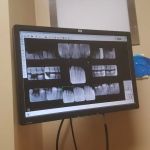Should You Get Braces or Clear Aligners?
When it comes to straightening your teeth, there are two main options that people often consider: traditional braces and clear aligners. Both options have their pros and cons, and choosing between them depends on several factors such as your dental needs, lifestyle, and personal preferences. Whether you're a teenager looking to enhance your smile or an adult exploring teeth straightening options, understanding the differences between braces and clear aligners will help you make the best choice for your dental health.
1. What Are Braces and Clear Aligners?
Braces have been the traditional method for straightening teeth for decades. They involve metal brackets that are attached to your teeth, connected by a wire. The wire is periodically tightened by an orthodontist, which gradually shifts your teeth into alignment. Braces are highly effective for correcting severe dental issues such as misaligned teeth, overbites, and underbites.
On the other hand, clear aligners are a more recent invention. The most popular brand of clear aligners is Invisalign, but there are other options available as well. These aligners are made of clear plastic and are custom-fitted to your teeth. They gradually move your teeth into position without the need for brackets or wires. Clear aligners are removable, meaning they can be taken out while eating, brushing, or flossing, offering more convenience and flexibility compared to traditional braces.
2. Pros and Cons of Braces
Traditional braces are known for their effectiveness in treating a wide range of dental issues. They can fix complex bite problems and can handle more severe cases than clear aligners. Because they are fixed to your teeth, there's no need to worry about losing them or forgetting to wear them.
However, braces come with some downsides. First, they are quite noticeable, which can be uncomfortable for those concerned about their appearance. Braces also require more maintenance, including regular visits to the orthodontist for adjustments. Eating with braces can be challenging, as certain foods can get stuck in the brackets and wires. Additionally, oral hygiene is more difficult, as it’s harder to clean your teeth properly with braces in place.
3. Pros and Cons of Clear Aligners
Clear aligners are known for their subtlety and convenience. Since they are clear and custom-fitted, they are less noticeable than traditional braces, making them an attractive option for adults and teenagers who are self-conscious about their appearance. Because they are removable, you can take them out when eating, brushing, or flossing, which makes it easier to maintain oral hygiene. Additionally, clear aligners tend to be more comfortable since they don’t have metal parts that can irritate the inside of your mouth.
However, clear aligners may not be suitable for more complex dental issues. While they are effective for mild to moderate alignment problems, they may not be able to address severe bite issues as effectively as braces. Clear aligners also require discipline—since they must be worn for 20-22 hours a day, it can be easy to forget or not wear them long enough to achieve the desired results. Moreover, aligners can get lost or damaged, which could result in additional costs for replacements.
4. Which Option Is Best for You?
The decision between braces and clear aligners largely depends on your dental needs and lifestyle. If you have complex dental issues such as severe crowding or bite problems, traditional braces may be the best option. They are more capable of addressing these concerns effectively and quickly.
If you have mild to moderate alignment issues and are looking for a more discreet option, clear aligners might be a better fit. They offer flexibility, ease of maintenance, and a more aesthetic solution, especially for adults who may feel self-conscious about wearing metal braces. It’s also important to consider the cost, as clear aligners tend to be more expensive than traditional braces, although prices can vary depending on the orthodontist and treatment plan.
5. Real-Life Experiences: Choosing Braces or Clear Aligners
When Sarah, a 30-year-old professional, was looking to straighten her teeth, she was torn between braces and clear aligners. She ultimately chose clear aligners for their convenience and the fact that she could remove them during work meetings and social events. “I loved the idea of being able to eat what I wanted and still maintain a professional appearance at work,” she said. After a year of treatment, Sarah was thrilled with the results and found that clear aligners fit seamlessly into her busy lifestyle.
On the other hand, John, a 17-year-old high school student, opted for traditional braces. His orthodontist recommended braces due to his severe underbite and misalignment. While John initially didn’t like the idea of having metal in his mouth, he quickly realized that braces were the most effective way to achieve the results he needed. “I was hesitant at first, but seeing the progress made me feel confident,” John shared. After two years of treatment, his smile was transformed, and he was glad he had chosen braces.
6. How to Make Your Decision
Ultimately, the best option for you will depend on your specific dental needs and goals. Here are some factors to consider when making your decision:
- Complexity of Dental Issues: If you have severe misalignment, overbite, or underbite, braces are likely the best choice.
- Aesthetics: If you want a more discreet option, clear aligners are less noticeable and can provide a more aesthetic solution.
- Comfort and Convenience: Clear aligners are removable, which makes it easier to maintain oral hygiene and eat without restrictions.
- Time Commitment: Braces may take longer to correct severe problems, but they are effective for long-term, permanent results.
Consulting with your dentist or orthodontist will also give you more personalized guidance based on your individual dental situation. No matter which option you choose, the end result—a beautiful, straight smile—is within reach.
If you're considering teeth straightening options and would like to learn more about braces or clear aligners, visit Dentistry Toothtruth for more information and to explore the best options for you.
SEO Title: Braces vs Clear Aligners: Which is the Best Option for You?
SEO Keywords: braces vs clear aligners, best teeth straightening options, clear aligners, traditional braces, orthodontic treatment
SEO Description: Learn about the pros and cons of braces and clear aligners to decide which option is best for your teeth straightening needs. Compare traditional braces with clear aligners and find the right treatment for you.







 Armendariz Family Dentistry - Bethany Armendariz5.0 (310 review)
Armendariz Family Dentistry - Bethany Armendariz5.0 (310 review) West Coast Dental of South Gate3.0 (495 review)
West Coast Dental of South Gate3.0 (495 review) Bryn Mawr Periodontal Associates, Ltd.4.0 (277 review)
Bryn Mawr Periodontal Associates, Ltd.4.0 (277 review) Dental Solutions of Bala Cynwyd4.0 (448 review)
Dental Solutions of Bala Cynwyd4.0 (448 review) Little Smiles Dental - Pediatric Dentist Worcester4.0 (801 review)
Little Smiles Dental - Pediatric Dentist Worcester4.0 (801 review) SmileLine Dental: Dr. Geeta Choudhary, DDS4.0 (87 review)
SmileLine Dental: Dr. Geeta Choudhary, DDS4.0 (87 review) The Importance of Oral Health Education During Pregnancy for a Healthy Pregnancy
The Importance of Oral Health Education During Pregnancy for a Healthy Pregnancy Best Tips for Brushing Your Teeth Properly for Healthy Gums: Essential Techniques for Oral Health
Best Tips for Brushing Your Teeth Properly for Healthy Gums: Essential Techniques for Oral Health Why Skipping Dental Checkups Can Lead to Bigger Oral Health Problems
Why Skipping Dental Checkups Can Lead to Bigger Oral Health Problems Advantages of Porcelain Dental Restorations
Advantages of Porcelain Dental Restorations How Can Diabetes Cause Tooth and Gum Problems? Preventing and Managing Oral Health Issues
How Can Diabetes Cause Tooth and Gum Problems? Preventing and Managing Oral Health Issues Healthy Habits for Promoting Good Oral Health and Hygiene: Tips for a Healthy Smile
Healthy Habits for Promoting Good Oral Health and Hygiene: Tips for a Healthy Smile